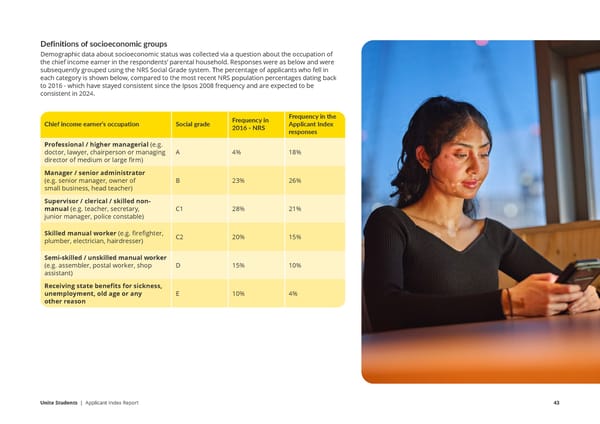Definitions of socioeconomic groups Demographic data about socioeconomic status was collected via a question about the occupation of the chief income earner in the respondents’ parental household. Responses were as below and were subsequently grouped using the NRS Social Grade system. The percentage of applicants who fell in each category is shown below, compared to the most recent NRS population percentages dating back to 2016 - which have stayed consistent since the Ipsos 2008 frequency and are expected to be consistent in 2024. Frequency in Frequency in the Chief income earner’s occupation Social grade Applicant Index 2016 - NRS responses Professional / higher managerial (e.g. doctor, lawyer, chairperson or managing A 4% 18% director of medium or large firm) Manager / senior administrator (e.g. senior manager, owner of B 23% 26% small business, head teacher) Supervisor / clerical / skilled non- manual (e.g. teacher, secretary, C1 28% 21% junior manager, police constable) Skilled manual worker (e.g. firefighter, C2 20% 15% plumber, electrician, hairdresser) Semi-skilled / unskilled manual worker (e.g. assembler, postal worker, shop D 15% 10% assistant) Receiving state benefits for sickness, unemployment, old age or any E 10% 4% other reason Unite Students | Applicant Index Report 43
 Unite Applicant Index Report Page 42 Page 44
Unite Applicant Index Report Page 42 Page 44